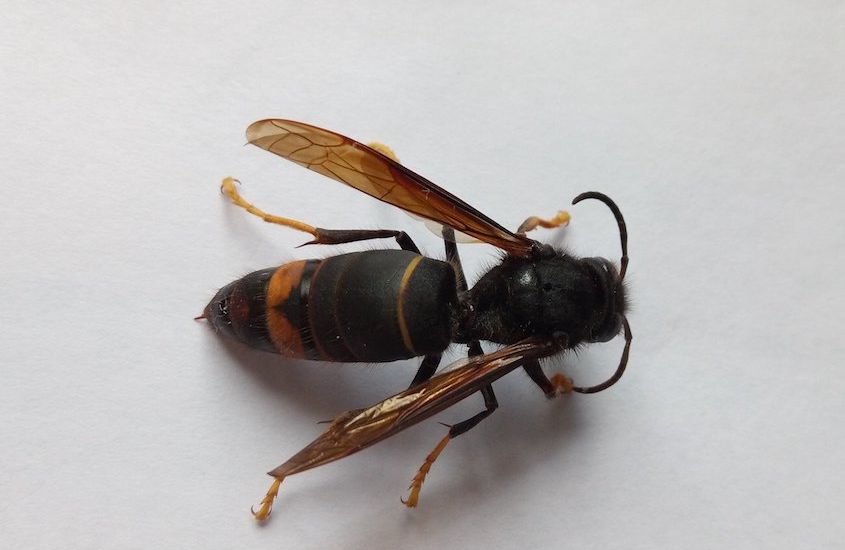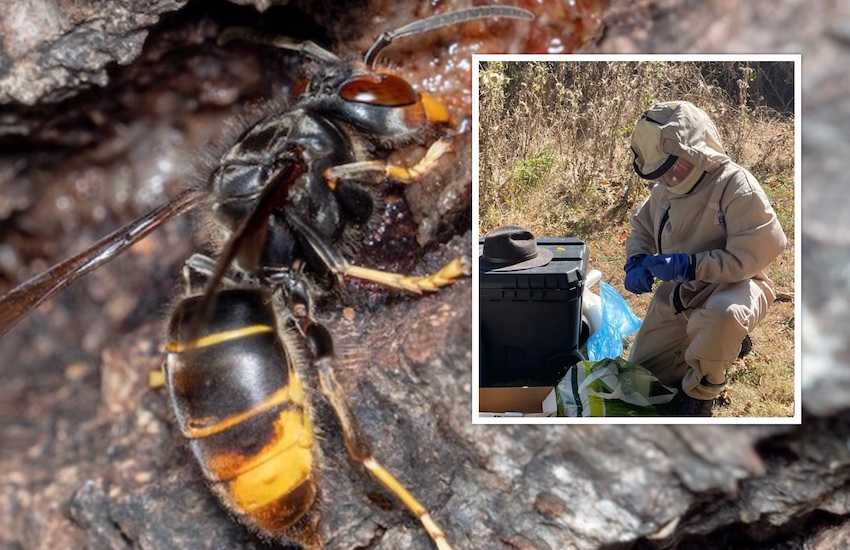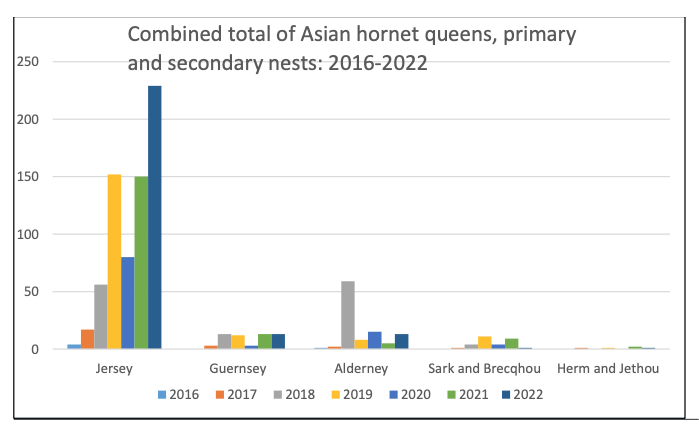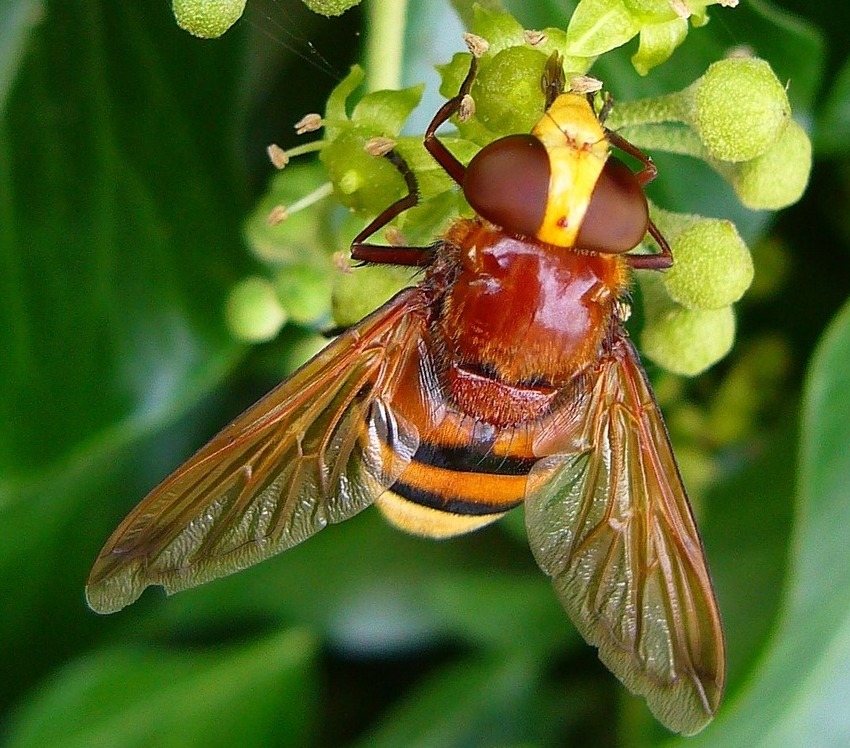


Efforts to control invasive Asian hornets successfully prevented them gaining a foothold last year.
The Asian hornet is a major threat to biodiversity, pollinating insects, and beekeeping with the islands on the frontline of the defence to stop it establishing across Britain.
Last year, a total of nine queens were caught in Spring, with two primary nests and two secondary nests destroyed during the summer.
This is in stark contrast to Jersey, where the proximity to France makes control harder.

Pictured: Asian Hornet numbers have been held at very low levels through a phased approach.
“Despite there being signs that 2022 was a favourable year for this invasive insect across Europe, including Jersey where they successfully destroyed 130 secondary nests, we have only seen a low number of Asian hornets, while public engagement and reporting has remained high,” said Francis Russell, Invasive Non-Native Species Policy & Coordination Officer for the States.
“We’re very grateful to the public across Guernsey, Herm, Sark and Alderney who have reported possible sightings to our team, as our strategy relies heavily on the vigilance and support of Islanders.”
The Asian Hornet Strategy began as a three year project. In May Environment & Infrastructure agreed to fund it on an ongoing basis.
The first known sighting of an Asian hornet in Guernsey was in March 2017.
They spread through Europe after arriving in Southern France in a consignment of pottery in 2004.
There are different phases of monitoring and control each year.
The first phase, Spring Queening, typically runs from April to June and aims to trap queen Asian hornets as they emerge from hibernation, or travel across the water from France. During this phase, specially modified traps are situated every 500m and monitored by householders and landowners.

The second phase, Track Don’t Trample, starts once the queen Asian hornets have left their primary nests and taken up residence in the larger secondary nests.
Throughout this summer and autumn phase islanders are encouraged to photograph and report suspected sightings of Asian hornets.
There were 262 reported sightings checked in 2022, of which 15 were identified as invasive hornets.
“We’re very grateful to members of the public across Guernsey, Herm, Sark and Alderney who have reported possible sightings to our team, as our strategy relies heavily on the vigilance and support of islanders. Ahead of this year’s spring trapping, we would continue to encourage islanders to familiarise themselves with information about Asian hornets at gov.gg/asianhornet and to remain on the lookout again as we head into the months of April and May.”

In total four nests were destroyed last year, which compares to five in 2021, none in 2020, three in 2019, eight in 2018 and two in 2017.
The first secondary nest was found in a large sycamore tree just inland from the Imperial Hotel, Torteval.
At the end of August, a second nest was discovered in the roof cavity of a bungalow on Belmont Road, St Peter Port. On Alderney, three secondary nests were destroyed, but none were found on Sark or Herm
Jersey reported 174 nests in 2022.

PIctured: A hornet mimic hoverfly. Credit: Andy Marquis.
The highest number of confirmed sightings since monitoring began was 62 in 2018.
Nine queens were caught last year, the second highest number on record with the highest being 10 in 2019.
Of the sightings reported to the team, 16% were actually hornet mimic hoverflys.
Comments
Comments on this story express the views of the commentator only, not Bailiwick Publishing. We are unable to guarantee the accuracy of any of those comments.